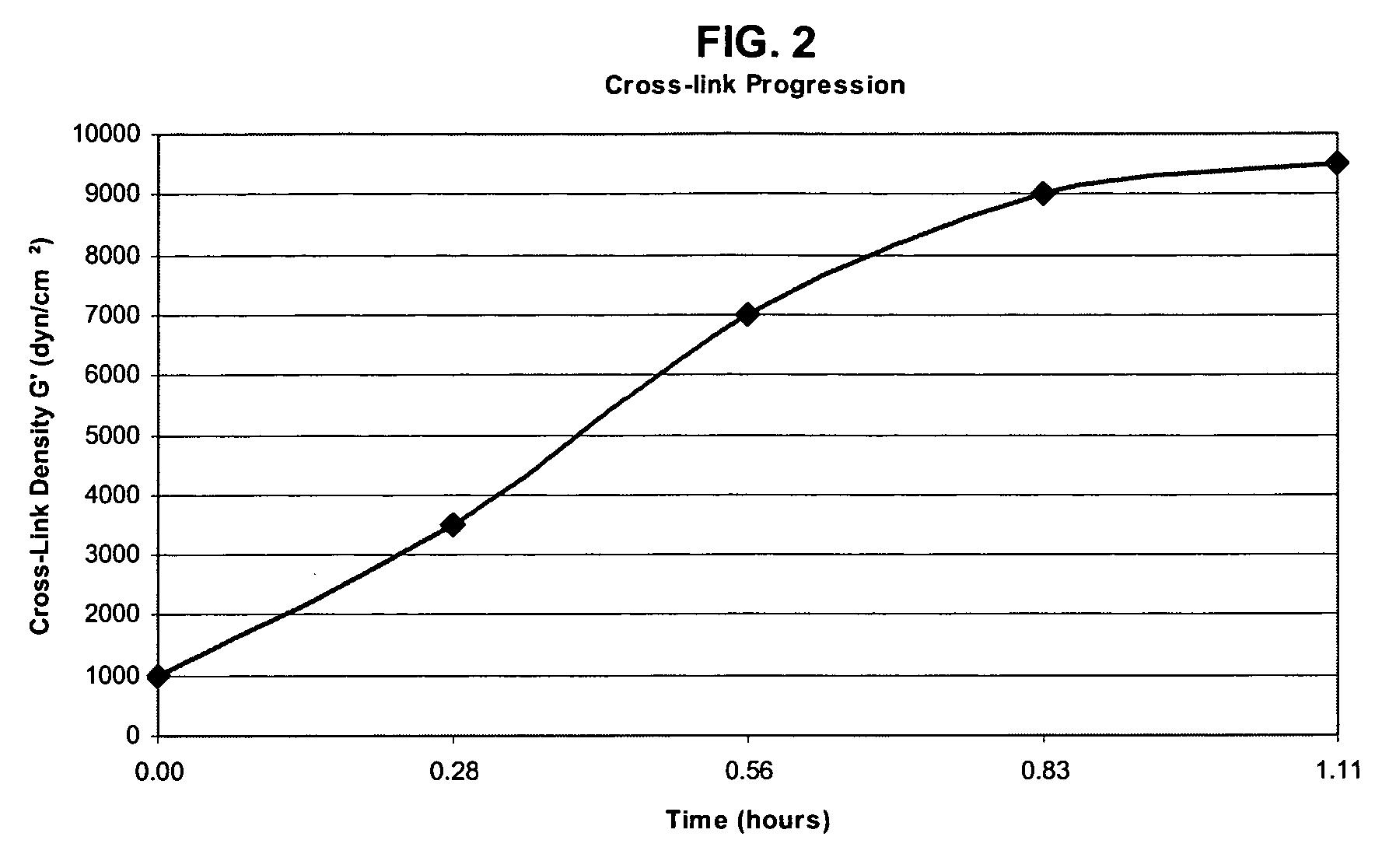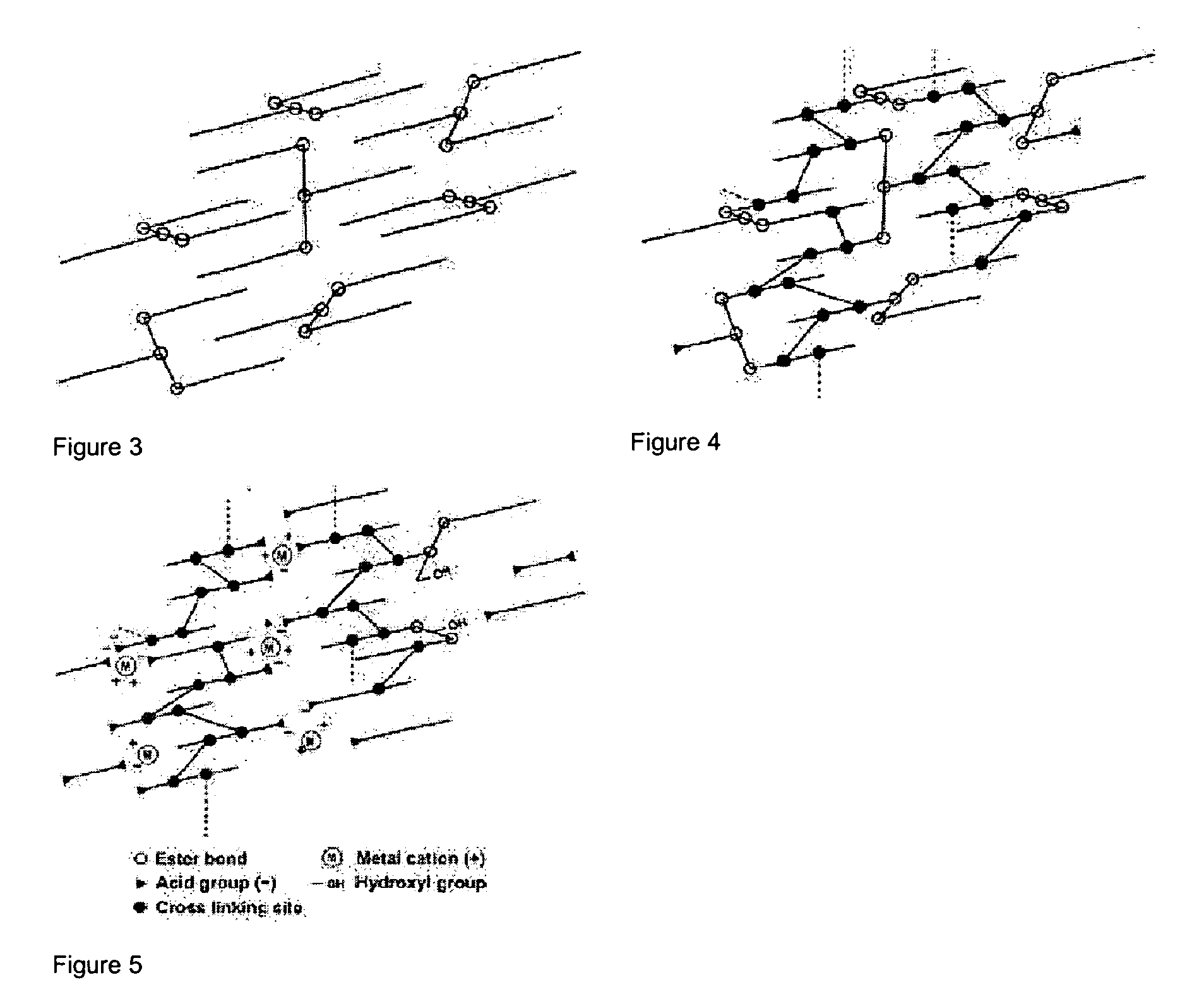Low emissions one part adhesive
a one-part adhesive and low emission technology, applied in the field of adhesives, can solve the problems of undesirable solvent-based adhesives, undesirable solvent-based adhesives, and undesirable solvent-based adhesives, and achieve the effects of reducing the number of solvent-based adhesives
- Summary
- Abstract
- Description
- Claims
- Application Information
AI Technical Summary
Benefits of technology
Problems solved by technology
Method used
Image
Examples
example 1
Construction Adhesive
IngredientAmount wt %Process1Linseed Oil6.002Aliphatic C-56.00Hydrocarbon Resinwith a softeningpoint of 85° C.3Alkylated Aromatic14.25Ingredient 2 and 3 are dissolved inC-9 Resin with aingredients 1 at temperatures ofsoftening point ofbetween 240° and 300° F. to form a115° C.homogenous solution. Thishomogenous solution should be heldat between 250° and 260° F. beforebeing added to ingredients below.49 mole ethoxylates1.00Add ingredients 4 and 5 toof nonylphenolsingredient 6 while mixing untilsurfactantuniform.5Non-Silicon Anti-0.25foaming agent6Carboxylated High43.00Maintain the temperature ofSolids Acrylicingredient 6 to between 60° and 90°F.. Add ingredients 4 and 5 whilemixing until uniform. Then add thepremixed ingredients 1, 2, and 3above to ingredient 6 with high shearagitation until ingredients form ahomogenous emu7Fugitive anti-0.05Add while agitatingoxidant, andFreeze-ThawStabilizer7Bactericide, and0.05Add while agitatingFungicides8Ammonia0.50Use the a...
example 2
For Construction Adhesives
IngredientAmount wt %Process1Tung Oil6.002Aliphatic C-56.00Hydrocarbon Resinwith a softening pointof 85° C.3Alkylated Aromatic C-14.25Ingredient 2 and 3 are dissolved9 Resin with ain ingredients 1 at temperaturessoftening point of 115°of between 240° and 300° F. toC.form a homogenous solution.This homogenous solutionshould be held at between 250°and 260° F. before being addedto ingredients below.49 mole ethoxylates of1.00Add ingredients 4 and 5 tononylphenols surfactantingredient 6 while mixing untiluniform.5Non-Silicon Anti-0.25foaming agent6Carboxylated High43.00Maintain the temperature ofSolids Styreneingredient 6 to between 60° andButadiene Rubber90° F.. Add ingredients 4 and 5while mixing until uniform.Then add the premixedingredients 1, 2, and 3 above toingredient 6 with high shearagitation until ingredients forma homogenous emu7Fugitive anti-oxidant,0.05Add while agitatingand Freeze-ThawStabilizer7Bactericide, and0.05Add while agitatingFungicides8Am...
example 3
Construction Adhesive
IngredientAmount wt %Process1Sunflower Oil6.002Aliphatic C-5 Hydrocarbon Resin6.00with a softening point of 85° C.3Alkylated Aromatic C-9 Resin14.25Ingredient 2 and 3 arewith a softening point of 115° C.dissolved in ingredients 1 attemperatures of between 240°and 300° F. to form ahomogenous solution. Thishomogenous solution shouldbe held at between 250° and260° F. before being added toingredients below.49 mole ethoxylates of1.00Add ingredients 4 and 5 tononylphenols surfactantingredient 6 while mixing untiluniform.5Non-Silicon Anti-foaming agent0.256Carboxylated High Solids Styrene43.00Maintain the temperature ofButadiene Rubberingredient 6 to between 60°and 90° F.. Add ingredients 4and 5 while mixing untiluniform. Then add thepremixed ingredients 1, 2, and3 above to ingredient 6 withhigh shear agitation untilingredients form ahomogenous emu7Fugitive anti-oxidant, and Freeze-0.05Add while agitatingThaw Stabilizer8Bactericide, and Fungicides0.05Add while agitati...
PUM
| Property | Measurement | Unit |
|---|---|---|
| softening point | aaaaa | aaaaa |
| softening point | aaaaa | aaaaa |
| softening point | aaaaa | aaaaa |
Abstract
Description
Claims
Application Information
 Login to View More
Login to View More - R&D
- Intellectual Property
- Life Sciences
- Materials
- Tech Scout
- Unparalleled Data Quality
- Higher Quality Content
- 60% Fewer Hallucinations
Browse by: Latest US Patents, China's latest patents, Technical Efficacy Thesaurus, Application Domain, Technology Topic, Popular Technical Reports.
© 2025 PatSnap. All rights reserved.Legal|Privacy policy|Modern Slavery Act Transparency Statement|Sitemap|About US| Contact US: help@patsnap.com



